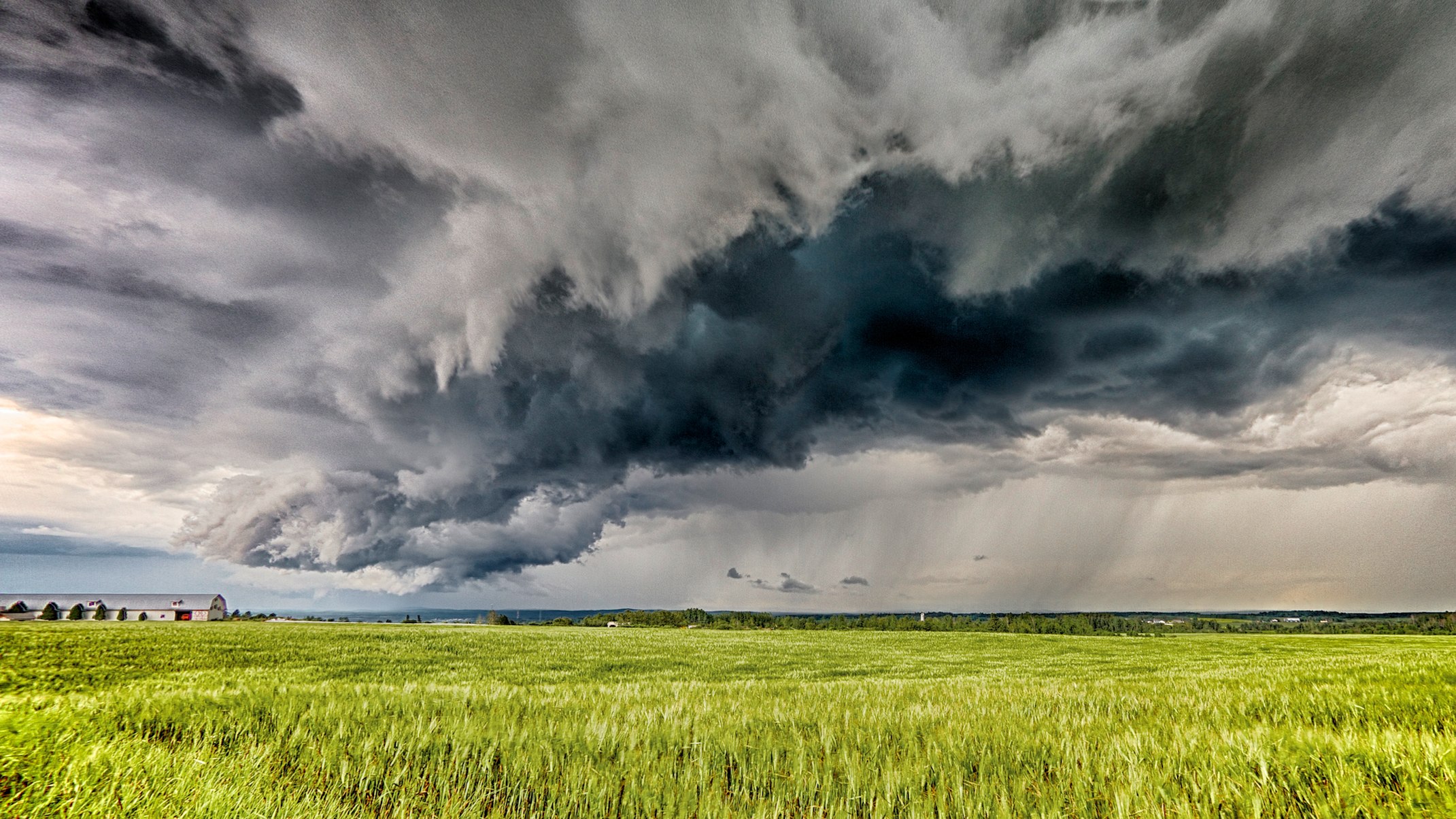Browse "Things"
-
Collection
Environment
Environment can be broadly defined as the natural world or the conditions in which a species lives. This collection gathers all of The Canadian Encyclopedia's articles pertaining to the environment, from pollution to various fields of scientific study. Image: Normand Gaudreault/CC flickr.
"https://d2ttikhf7xbzbs.cloudfront.net/media/media/53472dd6-e50d-4e16-ae19-90ef30141edc.jpg" // resources/views/front/categories/view.blade.php
https://d2ttikhf7xbzbs.cloudfront.net/media/media/53472dd6-e50d-4e16-ae19-90ef30141edc.jpg
-
Article
Environmental Agencies
Environmental problems may require action by the environmental agencies of governments at 5 levels: international, national, provincial, municipal and Aboriginal.
"https://development.thecanadianencyclopedia.ca/images/tce_placeholder.jpg?v=e9dca980c9bdb3aa11e832e7ea94f5d9" // resources/views/front/categories/view.blade.php
https://development.thecanadianencyclopedia.ca/images/tce_placeholder.jpg?v=e9dca980c9bdb3aa11e832e7ea94f5d9
-
Article
Environmental Movement in Canada
The environmental movement seeks to protect the natural world and promote sustainable living. It had its beginnings in the conservation efforts of the early 1900s. During this time, conservationists aimed to slow the rapid depletion of Canadian resources in favour of more regulated management. Many scholars divide the evolution of the environmental movement into “waves.” These waves are periods in time easily characterized by certain themes. While the number of waves and their characterization may differ from scholar to scholar, they’re often defined as follows: The first wave focused on conservation; the second, pollution; the third, the professionalization of environmental groups; and the fourth, climate change.
"https://d2ttikhf7xbzbs.cloudfront.net/media/media/1b9f48c9-96c8-4d74-a770-1a8819acf2ed.jpg" // resources/views/front/categories/view.blade.php
https://d2ttikhf7xbzbs.cloudfront.net/media/media/1b9f48c9-96c8-4d74-a770-1a8819acf2ed.jpg
-
Article
Environmental Governance
Environmental governance is a term used to describe how decisions about the ENVIRONMENT are made and who makes such decisions. It is a broad term that includes the formal and informal institutional arrangements for resource and environment decision-making and management.
"https://d2ttikhf7xbzbs.cloudfront.net/media/media/89071f93-7bdb-4f79-b9a9-e302f7e9f057.jpg" // resources/views/front/categories/view.blade.php
https://d2ttikhf7xbzbs.cloudfront.net/media/media/89071f93-7bdb-4f79-b9a9-e302f7e9f057.jpg
-
Article
Environmental Impact Assessment
An environmental impact assessment is a systematic analysis of the potential impacts of proposed development projects on the natural and human environment (see Social Impact Assessment), for identifying measures to prevent or minimize impacts prior to major decisions being taken and project commitments made.
"https://development.thecanadianencyclopedia.ca/images/tce_placeholder.jpg?v=e9dca980c9bdb3aa11e832e7ea94f5d9" // resources/views/front/categories/view.blade.php
https://development.thecanadianencyclopedia.ca/images/tce_placeholder.jpg?v=e9dca980c9bdb3aa11e832e7ea94f5d9
-
Article
Environmental Law
Environmental law is a relatively new field of law comprising laws designed to protect the natural environment.
"https://development.thecanadianencyclopedia.ca/images/tce_placeholder.jpg?v=e9dca980c9bdb3aa11e832e7ea94f5d9" // resources/views/front/categories/view.blade.php
https://development.thecanadianencyclopedia.ca/images/tce_placeholder.jpg?v=e9dca980c9bdb3aa11e832e7ea94f5d9
-
Article
Environmental Management
Successful actions to protect the environment and conserve natural resources constitute environmental management. More formally, environmental management refers to decisions and actions regarding how to allocate or develop resources; and how to use, restore, rehabilitate, monitor or evaluate environmental change. Environmental management involves decisions, strategies, programs and projects to use or protect the environment in order to meet broader social objectives.
"https://development.thecanadianencyclopedia.ca/images/tce_placeholder.jpg?v=e9dca980c9bdb3aa11e832e7ea94f5d9" // resources/views/front/categories/view.blade.php
https://development.thecanadianencyclopedia.ca/images/tce_placeholder.jpg?v=e9dca980c9bdb3aa11e832e7ea94f5d9
-
Article
Environmental Movement in Canada (Plain-Language Summary)
The environmental movement tries to protect the natural world and promote sustainable living. The environmental movement is usually divided into periods of time based on themes. These periods are called waves. In Canada, the first wave focused on awareness, the second on pollution and conservation, the third on the professionalization of environmental groups and the fourth on climate change. This article is a plain-language summary of the environmental movements in Canada. If you are interested in reading about this topic in more depth, please see the full-length entry, Environmental Movement in Canada.
"https://d2ttikhf7xbzbs.cloudfront.net/media/media/bad66da4-fe45-4742-b884-f8b9c87aa601.jpg" // resources/views/front/categories/view.blade.php
https://d2ttikhf7xbzbs.cloudfront.net/media/media/bad66da4-fe45-4742-b884-f8b9c87aa601.jpg
-
Article
Environmental Racism in Canada
Environmental racism is the disproportionate proximity and greater exposure of Indigenous, Black and other racialized communities to polluting industries and environmentally hazardous activities. In Canada, Indigenous and African Nova Scotian communities have been the most impacted by environmental racism. Examples of environmental racism in Nova Scotia include an open dump in Africville, landfills in Shelburne and Lincolnville, a pulp and paper mill in Pictou Landing First Nation, and a pipeline in Sipekne’katik First Nation. A pipeline also runs through Wet'suwet'en First Nation in British Columbia, while in Ontario there is mercury contamination in Grassy Narrows First Nation and over 60 petrochemical facilities surrounding Aamjiwnaang First Nation.
"https://d2ttikhf7xbzbs.cloudfront.net/media/new_article_images/EnvironmentalRacisminCanada/ChemicalValley.jpg" // resources/views/front/categories/view.blade.php
https://d2ttikhf7xbzbs.cloudfront.net/media/new_article_images/EnvironmentalRacisminCanada/ChemicalValley.jpg
-
Article
Environmental Racism in Canada (Plain-Language Summary)
Environmental racism is when polluting industries and environmentally hazardous activities are primarily located near low-income or minority communities. In Canada, Indigenous and Black communities are the most affected by environmental racism. This article contains examples of environmental racism in Nova Scotia, Ontario and British Columbia. This article is a plain-language summary of environmental racism in Canada. If you are interested in reading about this topic in more depth, please see the full-length entry, Environmental Racism in Canada.
"https://d2ttikhf7xbzbs.cloudfront.net/media/new_article_images/EnvironmentalRacisminCanada/ChemicalValley.jpg" // resources/views/front/categories/view.blade.php
https://d2ttikhf7xbzbs.cloudfront.net/media/new_article_images/EnvironmentalRacisminCanada/ChemicalValley.jpg
-
Article
Environmental Stewardship in Canada
Environmental stewardship is the responsible use and protection of the environment. Examples of responsible use include limiting the harvest of natural resources. Examples of protection include conservation the creation of national and provincial parks. For some, “environmental stewardship” may invoke religious connotations. However, many prefer this phrase to “environmental management,” as the word management suggests humans dominating over nature. (See also Environmental Movement in Canada; Sustainability in Canada.)
"https://d2ttikhf7xbzbs.cloudfront.net/media/new_article_images/ReservesinMB/SagkeengFirstNation.jpg" // resources/views/front/categories/view.blade.php
https://d2ttikhf7xbzbs.cloudfront.net/media/new_article_images/ReservesinMB/SagkeengFirstNation.jpg
-
Article
Epidemics in Canada
An epidemic occurs when an infectious disease spreads rapidly throughout a community at a particular time. Several epidemics have occurred over the course of Canadian history, the most disastrous being those which affected Indigenous peoples following the arrival of Europeans. Click here for definitions of key terms used in this article.
"https://d2ttikhf7xbzbs.cloudfront.net/media/Twitter_Cards/SARS_twitter_card.jpg" // resources/views/front/categories/view.blade.php
https://d2ttikhf7xbzbs.cloudfront.net/media/Twitter_Cards/SARS_twitter_card.jpg
-
Article
Epidemiology
Epidemiology is the branch of medical science devoted to the study of the distribution and determinants of diseases in populations. Descriptive and analytic epidemiology are observational, whereas clinical epidemiology is experimental in nature.
"https://development.thecanadianencyclopedia.ca/images/tce_placeholder.jpg?v=e9dca980c9bdb3aa11e832e7ea94f5d9" // resources/views/front/categories/view.blade.php
https://development.thecanadianencyclopedia.ca/images/tce_placeholder.jpg?v=e9dca980c9bdb3aa11e832e7ea94f5d9
-
Article
Equal Rights Association
The Equal Rights Association for the Province of Ontario, established June of 1889 in Toronto, was formed in response to Québec's JESUITS' ESTATES ACT. The ERA criticized Catholic interference in politics and what it saw as the subservience of politicians to the Roman Catholic Church.
"https://development.thecanadianencyclopedia.ca/images/tce_placeholder.jpg?v=e9dca980c9bdb3aa11e832e7ea94f5d9" // resources/views/front/categories/view.blade.php
https://development.thecanadianencyclopedia.ca/images/tce_placeholder.jpg?v=e9dca980c9bdb3aa11e832e7ea94f5d9
-
Article
Equalization Payments
Equalization payments are payments that the federal government makes to the poorer provinces. The monies come from Ottawa's general revenues and are unconditional transfers that can be spent as the recipient provinces please (see also TRANSFER PAYMENT).
"https://development.thecanadianencyclopedia.ca/images/tce_placeholder.jpg?v=e9dca980c9bdb3aa11e832e7ea94f5d9" // resources/views/front/categories/view.blade.php
https://development.thecanadianencyclopedia.ca/images/tce_placeholder.jpg?v=e9dca980c9bdb3aa11e832e7ea94f5d9
